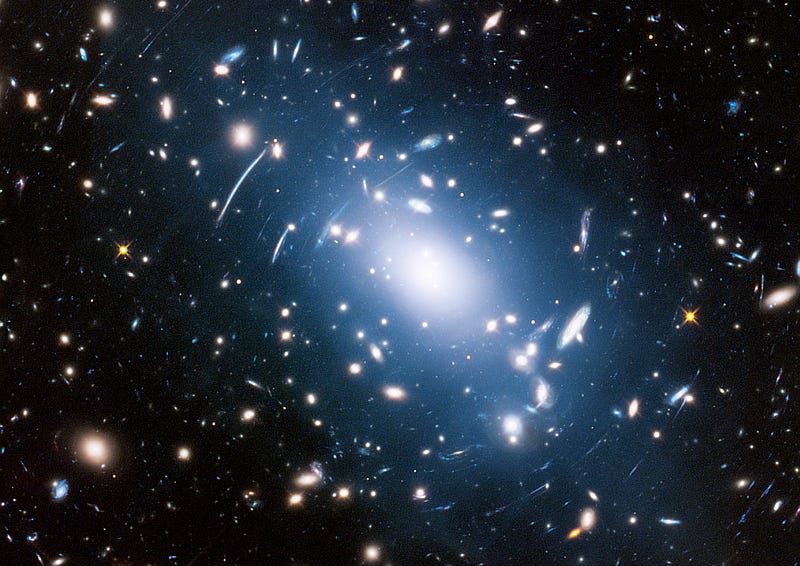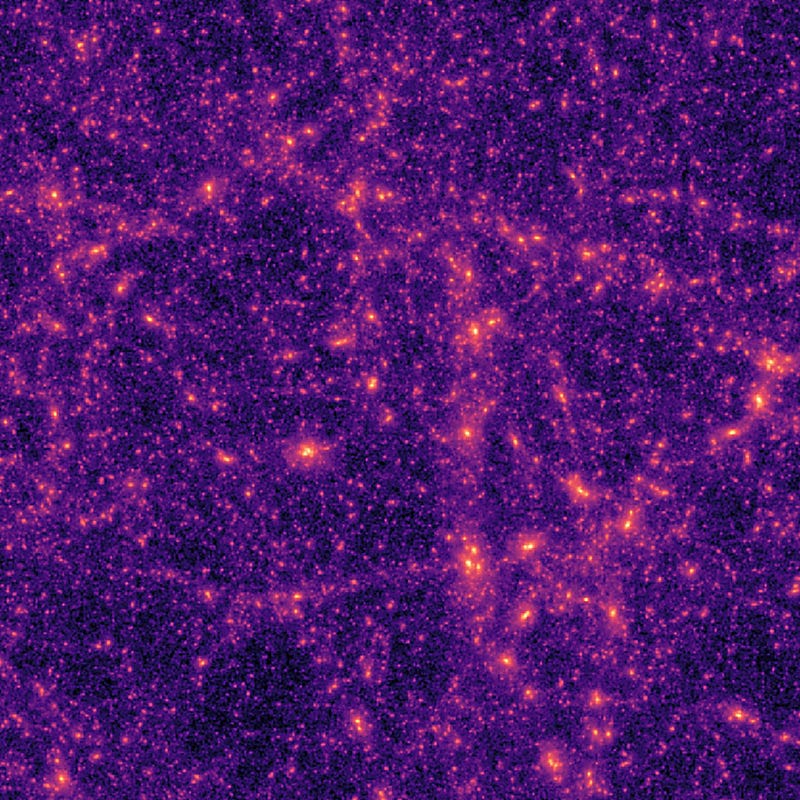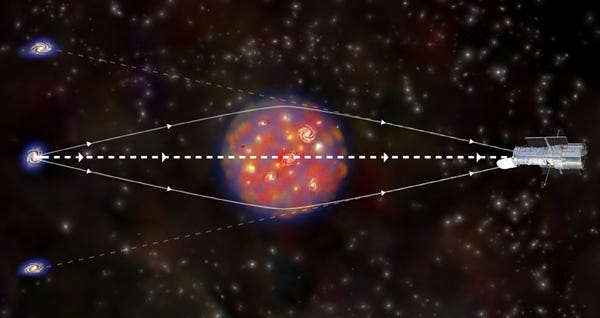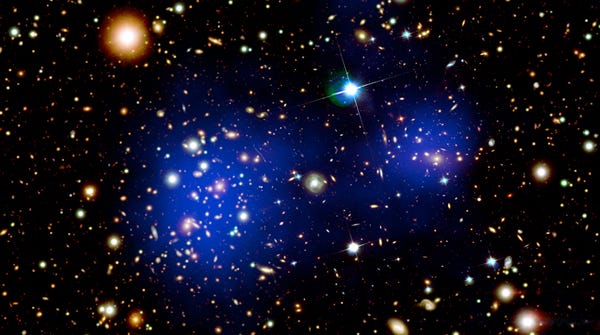# Unveiling the Universe: The Role of AI in Understanding Dark Matter
Written on
Chapter 1: The Enigma of Dark Matter
Artificial intelligence is emerging as a pivotal tool for astronomers attempting to solve the riddles surrounding dark matter, one of the greatest enigmas in the universe. The observable components of the cosmos—stars, planets, and galaxies—constitute less than five percent of the total mass and energy that permeates space. The true nature of dark matter and dark energy, which comprise the vast majority of existence, remains elusive.
Dark matter plays a crucial role in binding galaxies and clusters together, while dark energy drives the accelerating expansion of the universe. Although astronomers can observe the effects of these phenomena, neither dark matter nor dark energy can be directly perceived, complicating the study of the universe at large.

One approach to infer the presence of dark matter is through the observation of light bending around massive structures, as illustrated in images of the Abell S 1063 galactic cluster, which contains thousands of galaxies. Dark matter influences light from far-off objects, distorting it similarly to how a lens would. By analyzing this distortion, astronomers can map dark matter concentrations within massive structures.
NASA explains, "We can use indirect methods to study phenomena, like interpreting a shadow to deduce what casts it. Gravitational lensing provides a way for scientists to indirectly examine dark matter. When light from distant stars traverses a galaxy or cluster, the gravitational pull from the matter within causes the light to bend."
Section 1.1: AI's Role in Mapping Dark Matter
Researchers at ETH Zurich are now leveraging artificial intelligence to enhance dark matter mapping. By employing AI techniques akin to facial recognition, they aim to pinpoint dark matter concentrations and deepen their understanding of this mysterious substance.
Machine learning algorithms empower the systems to autonomously identify significant dark matter patterns within cosmic maps.

Since dark matter is invisible, astronomers examine light from distant galaxies that bends when it passes through areas dense with dark matter. This phenomenon, known as weak gravitational lensing, alters the images of the background galaxies, allowing for the creation of gravitational maps that reveal dark matter's presence. These maps are then compared against theoretical models to ascertain which cosmological framework aligns most closely with actual observations.


The machine learning methods employed resemble those used in facial recognition systems found on platforms like Facebook. As Alexandre Refregier from the Institute of Particle Physics and Astrophysics states, "Facebook's algorithms identify facial features; ours are designed to detect the signatures of dark matter and dark energy."
Traditionally, human-created statistical methods like correlation functions were used to analyze this data, but they often fall short in recognizing intricate patterns within gravitational maps. Refregier adds, "In our recent research, we adopted an innovative methodology where we allowed the computers to determine the most effective statistical analysis."
Chapter 2: Training Neural Networks
As part of their study, researchers trained neural networks using simulated universe data. The networks meticulously analyzed dark matter maps to extract maximal information, continually enhancing their ability to discern various features.
Ultimately, the AI achieved results that were 30% more accurate than those derived from traditional human statistical methods. Improving accuracy using standard methods would require double the telescope time, which can be both challenging and costly.
"I’m dark matter. The universe inside of me is full of something, and science can’t even shine a light on it," reflects Maria Dahvana Headley in Magonia.
The fully trained AI was then tasked with examining dark matter maps to reveal insights that conventional methods might overlook. Janis Fluri, a PhD student in Refregier's team, notes, "The advanced neural network enables us to extract more information from the data than previous methods. We believe that applying machine learning in cosmology will lead to numerous future breakthroughs."

The familiar facial recognition technology hinges on identifying fixed facial features that are hard to modify, such as the distance between eyes or chin shape. This technology, similar to that used in airports and at public events, represents a new avenue in the ongoing quest to detect dark matter in the cosmos.
As researchers continue their work, they will apply these neural networks to larger datasets, such as those from the Dark Energy Survey. Understanding dark matter's role in the formation and evolution of the universe is vital for unraveling its ultimate fate, as it affects how galaxies cluster together and how dark energy drives cosmic expansion.
The findings from this project were published in Physical Review D.
How The Universe TESTS YOU HARD Before Your REALITY Changes - This video explores the profound challenges and transformations one faces when navigating through the mysteries of existence.
Facial Recognition Technology Raises Concerns Over Misidentification, Implicit Bias - This video delves into the ethical implications and potential biases associated with facial recognition technology in various applications.
Did you enjoy this article? Subscribe to The Cosmic Companion Newsletter!